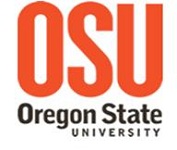- Dr. Stacey Harper received a five-year, $3.3 million award from the National Science Foundation to study the risks of micro- and nanoplastics to aquatic organisms in the pacific northwest.
- Dr. Stacey Harper received a five-year, $1.9 million award as an Outstanding New Environmental Scientist (ONES) from the National Institute of Environmental Health Sciences (NIEHS) and was selected as 2013 recipient of the L.L. Stewart Faculty Scholars Award which recognizes an outstanding faculty members at Oregon State University.
You are here
Nitric Oxide-Releasing Nanoparticles Prevent Propionibacterium acnes-Induced Inflammation by Both Clearing the Organism and Inhibiting Microbial Stimulation of the Innate Immune Response
| Title | Nitric Oxide-Releasing Nanoparticles Prevent Propionibacterium acnes-Induced Inflammation by Both Clearing the Organism and Inhibiting Microbial Stimulation of the Innate Immune Response |
| Publication Type | Journal Article |
| Year of Publication | 2015 |
| Authors | Qin M, Landriscina A, Rosen JM, Wei G, Kao S, Olcott W, Agak GW, Paz KB, Bonventre J, Clendaniel A, Harper S, Adler BL, Krausz AE, Friedman JM, Nosanchuk JD, Kim J, Friedman AJ |
| Journal | J Invest Dermatol |
| Volume | 135 |
| Issue | 11 |
| Pagination | 2723-31 |
| Date Published | 2015 Nov |
| ISSN | 1523-1747 |
| Abstract | Propionibacterium acnes induction of IL-1 cytokines through the NLRP3 (NLR, nucleotide oligomerization domain-like receptor) inflammasome was recently highlighted as a dominant etiological factor for acne vulgaris. Therefore, therapeutics targeting both the stimulus and the cascade would be ideal. Nitric oxide (NO), a potent biological messenger, has documented broad-spectrum antimicrobial and immunomodulatory properties. To harness these characteristics to target acne, we used an established nanotechnology capable of generating/releasing NO over time (NO-np). P. acnes was found to be highly sensitive to all concentrations of NO-np tested, although human keratinocyte, monocyte, and embryonic zebra fish assays revealed no cytotoxicity. NO-np significantly suppressed IL-1β, tumor necrosis factor-α (TNF-α), IL-8, and IL-6 from human monocytes, and IL-8 and IL-6 from human keratinocytes, respectively. Importantly, silencing of NLRP3 expression by small interfering RNA did not limit NO-np inhibition of IL-1 β secretion from monocytes, and neither TNF-α nor IL-6 secretion, nor inhibition by NO-np was found to be dependent on this pathway. The observed mechanism by which NO-np impacts IL-1β secretion was through inhibition of caspase-1 and IL-1β gene expression. Together, these data suggest that NO-np can effectively prevent P. acnes-induced inflammation by both clearing the organism and inhibiting microbial stimulation of the innate immune response. |
| DOI | 10.1038/jid.2015.277 |
| Alternate Journal | J. Invest. Dermatol. |
| PubMed ID | 26172313 |
| PubMed Central ID | PMC4640998 |
| Grant List | 1RC2A1087612-01 / RC / CCR NIH HHS / United States ES016896-01 / ES / NIEHS NIH HHS / United States ES017552-01A2 / ES / NIEHS NIH HHS / United States P01 HL110900 / HL / NHLBI NIH HHS / United States P30 ES03850 / ES / NIEHS NIH HHS / United States R01 AI056070 / AI / NIAID NIH HHS / United States R01 AR053542 / AR / NIAMS NIH HHS / United States R01 AR053542 / AR / NIAMS NIH HHS / United States R01 ES017552 / ES / NIEHS NIH HHS / United States T32 ES0007060 / ES / NIEHS NIH HHS / United States |
Theme by Danetsoft and Danang Probo Sayekti inspired by Maksimer
